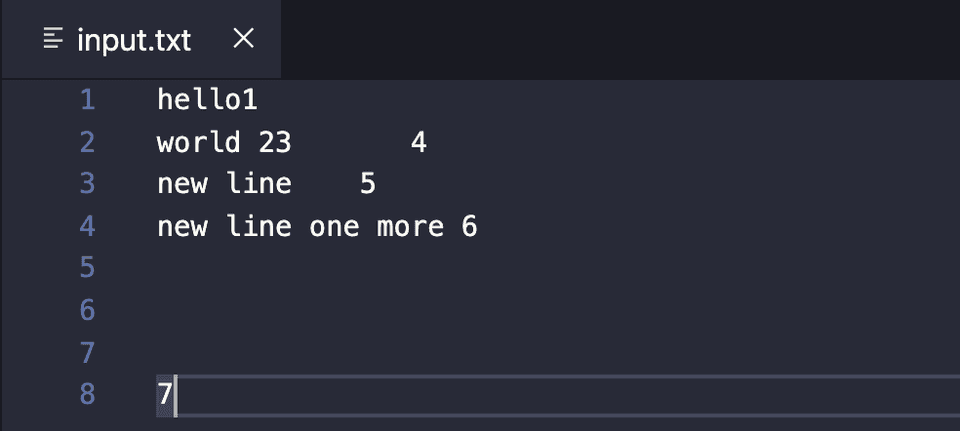Python program to find the sum of all numbers of a file:
In this Python tutorial, we will learn how to find the sum of all numbers found in a file. With this program, you will learn basic file handling in Python like how to read the contents of a file, how to read the characters of a file and how to check if a character is a digit or not. We will provide the path of the file to the program.
Algorithm to find the sum:
Below algorithm we will use to find the sum of all numbers in a file:
- The file path is given. Open the file in read mode.
- Initialize one variable to hold the sum of all numbers of the file. Initialize this variable as 0.
- Read all contents of the file.
- Iterate through the lines of the file one by one.
- For each line, iterate through the characters one by one.
- For each character, check if the character is a digit or not, if yes, add it to the sum variable. Else, ignore it.
- Once the iteration is completed, print out the sum to the user.
Method 1: Python program to find the sum of digits of a file:
Below is the complete Python program:
given_file = open('c:\\Users\\root\\Desktop\\input.txt', 'r')
lines = given_file.readlines()
sum = 0
for line in lines:
for c in line:
if c.isdigit() == True:
sum = sum + int(c)
print(sum)
given_file.close()Download the program on Github
Here,
- The
input.txtis the file path. To run this program, you need to create oneinput.txtfile. Make sure to update it to the file path of the file you will use in this program. - The
open()method is used to open a file in Python. We are passingras the second parameter. It will open the file inreadmode. We are not doing any write operations to the file. So, if we open it inreadmode, it will work. - The
readlines()method returns one list holding the lines of the file. This value is assigned to thelinesvariable. - The
sumvariable is used to hold the sum of all digits of the file. It is initialized as 0. - The first line of the
forloop is used to iterate through all lines of the list one by one. - For each line, we are iterating through the characters of that line.
- The
isdigit()method is used to check if a character is a digit or not. This method returnsTrueif the character is a digit. It adds the digit value to thesumvariable. - Finally, after the loops are ended, we are printing the value of sum to the user.
Sample output:
For example, if we have input.txt file with the below content:
hello1
world 23 4
new line 5
new line one more 6
7If we run the above program, it will print 28 as the output.

Method 2: How to use with open to open a file in Python:
We can use the with statement with the open function to open a file. The advantage of this approach is that we don’t have to close the file with the close() method explicitly. The with statement makes sure that the file is closed at the end of the program.
The following program shows how to use the with statement to find the sum:
with open('c:\\Users\\root\\Desktop\\input.txt', 'r') as given_file:
lines = given_file.readlines()
sum = 0
for line in lines:
for c in line:
if c.isdigit() == True:
sum = sum + int(c)
print(sum)Download the program on Github
If you run this program, it will give similar results.
You might also like:
- How to use rjust() method in python to right justified a string
- Python program to remove the first n characters from a string
- How to get all sublists of a list in Python
- Example of python operator module lt
- How to compare one string with an integer value in python
- Python program to read all numbers from a file
